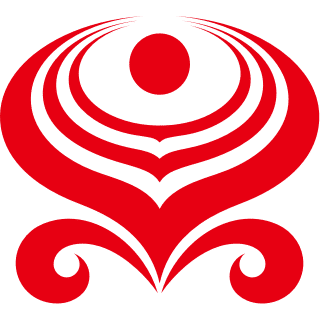Noryangjin Fish Market Seoul – Fresh Seafood & Local Dining

Noryangjin Fish Market as One of Seoul’s Most Famous Seafood Destinations
Nestled on the banks of the Han River, Noryangjin Fish Market Seoul is perhaps the most well-known seafood marketplace in South Korea. It’s both a wholesale hub and a major attraction for locals and travellers alike. Whether you’re after live fish, shellfish, or cooked-to-order seafood dishes, this market offers a feast for the senses — from the gleaming tanks of marine life to the animated voices of vendors, the smell of brine and seaweed, and the sizzle of grilling prawns upstairs in the restaurants.
History of Noryangjin Fish Market
Vendor sells seafood at Noryangjin Fisheries Wholesale Market in Seoul. It is one of largest fish markets in Korea.
Early Beginnings

Seoul

Noryangjin Fish Market: Walking Tour with Guide | Seoul, South Korea
Seoul
See Price
Traditions and Market Atmosphere
The Modern Transformation
Role in Korea's Seafood Culture
Why Visit Noryangjin Fish Market?
Salad in oyster served with greens and lemon Dining at Noryangjin Fisheries Wholesale Market
When it comes to discovering the heart of Seoul’s seafood culture, Noryangjin Fish Market Seoul is hard to beat. Known as one of the largest and most famous seafood markets in South Korea, it’s where tradition meets everyday life. Whether you’re curious about Korean food, eager to try freshly prepared dishes, or simply want to soak in an authentic market atmosphere, this spot offers a memorable taste of local culture.
The appeal lies in its freshness. Rows of stalls feature fish, shellfish, crabs, prawns, squid, and even more unusual catches like sea cucumbers and sea pineapples. Everything is either displayed on ice or swimming in tanks, ready for you to choose. After making your pick, head upstairs to one of the restaurants where chefs will prepare it in true Korean style — sliced raw for hoe (Korean sashimi), lightly grilled, steamed, or transformed into a spicy fish stew. It’s not just a meal, but an experience that ties you to Korea’s long-standing seafood traditions.
Discover flight with Traveloka
Tue, 28 Oct 2025

Jeju Air
Singapore (SIN) to Seoul (ICN)
Start from S$138.00
Fri, 24 Oct 2025

Hainan Airlines
Singapore (SIN) to Seoul (ICN)
Start from S$221.08
Fri, 24 Oct 2025

Eastar Jet
Singapore (SIN) to Seoul (GMP)
Start from S$249.97
What to Expect at Noryangjin Fish Market
Walking into Noryangjin Fish Market Seoul is a sensory rush. The market is split into several sections, each with its own energy and purpose.
Best Seafood to Try at Noryangjin
When you think of Noryangjin Fish Market Seoul, you think of seafood at its freshest. This market has earned its reputation as a must-visit destination for food lovers, with a dazzling variety of fish and shellfish waiting to be discovered. Among the most famous dishes is live octopus (sannakji), served in small pieces that still move on the plate — a true Korean delicacy for the adventurous eater.
Crabs, from snow crabs to the prized king crab, are another highlight. Choose one from the tanks and watch it prepared into steaming, juicy perfection. Clams and shellfish are abundant, often grilled right at the restaurant tables, releasing a smoky aroma that fills the air. For something classic, try hoe, Korean sashimi, usually made from flounder or rockfish, sliced fresh after your purchase.
Don’t miss the simple joy of a perfectly grilled fish, often seasoned lightly to allow its natural flavour to shine. Seasonal catches also rotate throughout the year — from mackerel and halibut to prawns and sea cucumbers — meaning every visit can bring something new to the table.
How to Buy and Eat at Noryangjin Market
Visiting Noryangjin Fish Market can feel overwhelming at first, but once you know the flow, it’s an easy and enjoyable process. Here’s how it works:
Restaurants Inside Noryangjin Fish Market
The real magic of Noryangjin Fish Market Seoul happens when your seafood transforms into a meal. The market has a network of restaurants, mostly located upstairs in the new building, designed to prepare what you’ve just bought.
Dining here isn’t just about eating; it’s about seeing your seafood journey from tank to table, making the experience unique to Seoul.
Prices at Noryangjin Fish Market
One of the biggest draws of Noryangjin Fish Market Seoul is not just the incredible variety of seafood, but also the prices. Compared to restaurants in the city, buying directly from vendors and having your seafood cooked on-site often works out more affordable, especially when you’re sharing with friends or family.
On average, you can expect prices like this when converted to Singapore dollars (SGD): a fresh flatfish or rockfish for sashimi costs around S$25–S$40, while a plate of live octopus (sannakji) might be S$15–S$25. Crabs vary widely, with snow crabs starting at about S$40–S$70, and king crabs fetching anywhere from S$100 upwards, depending on size. Shellfish such as clams, scallops, and mussels usually range between S$10–S$25 per portion, making them an easy pick for grilling. Seasonal catches, like prawns or halibut, can be slightly more expensive during peak demand, but freshness is guaranteed.
It’s important to remember that the restaurants upstairs will also charge a cooking fee, usually around S$5–S$10 per person depending on the dishes you want prepared. Even with this additional cost, the overall experience is still excellent value compared to fine dining seafood options elsewhere in Seoul. To get the best deal, choose your seafood carefully, compare prices across a few stalls, and don’t be shy to ask vendors for recommendations. A polite attempt at bargaining is welcome, but keep it friendly.
Tips for Visiting Noryangjin Market
High angle view of Noryangjin Fish Market against Yeouido 63 Building and Han River in summer
If you’re planning a trip to Noryangjin Fish Market, timing and etiquette can make all the difference in your experience.
Nearby Attractions Around Noryangjin
Sunset view of tourists sitting on grass and swing chair against Han River and 63 Building of Yeouido at Nodeul Island
Visiting Noryangjin Fish Market Seoul isn’t just about seafood. The surrounding area offers plenty to see and do, making it easy to turn your trip into a full-day experience. Here are some nearby highlights:

Yeouido

Han River E-land Cruise

9.0/10
Yeouido
S$18
S$17
Where to Stay Near Noryangjin Fish Market
If you’d like to stay close to the market, there are several options that suit different budgets. Here are some convenient picks near Noryangjin Fish Market:
How to Get to Noryangjin Fish Market
Reaching Noryangjin Fish Market Seoul is straightforward thanks to its central location and excellent public transport connections. Whether you’re coming from downtown Seoul, Gangnam, or Yeouido, you’ll find it easy to get there by subway, bus, or taxi.
By Subway
The most convenient way is via Noryangjin Station, which is served by Line 1 (dark blue) and Line 9 (gold).
By Bus
Several bus routes stop near the market. Buses heading towards Noryangjin Station or Yeouido often pass nearby. Look out for local green buses and blue trunk buses that connect key neighbourhoods with this area. It’s an affordable option if you’re staying close by.

Dongdaemun-gu

Dongdaemun City Tour Bus: Traditional Culture Course | Seoul

6.0/10
Dongdaemun-gu
S$18
By Taxi or Car
Taxis are easy to hail across Seoul, and drivers will recognise “Noryangjin Su-san Sijang” (the Korean name of the fish market). Traffic around Yeouido and the Han River can be heavy during peak hours, so plan accordingly. There’s parking available, but public transport is usually the smarter choice.
Tips for First-Time Visitors

Jung-gu

AREX Incheon - Seoul Express Train Ticket

9.5/10
Jung-gu
S$12
S$11
Why Noryangjin Fish Market is a Must-Visit Spot for Seafood Lovers and Cultural Explorers
A trip to Noryangjin Fish Market is far more than a shopping stop — it’s an experience that blends food, culture, and daily life in Seoul. From the spectacle of the early morning auctions to the thrill of choosing live seafood and tasting it freshly prepared upstairs, the market offers an authentic slice of Korea that you won’t find anywhere else.
Seafood enthusiasts will appreciate the range and freshness, while cultural explorers will enjoy watching the interaction between vendors, buyers, and locals. Add to that its easy accessibility from central Seoul, and it’s clear why the market remains one of the city’s most iconic destinations.
Plan your visit to Noryangjin Fish Market Seoul with ease. Book attraction tickets, nearby hotels, and flight tickets all in one place. Find more details and travel tips in the Traveloka App today!
Tags:
seoul
travel to seoul
In This Article
Top Picks for Activities from Travelers

Palace Fox Hanbok: Gyeongbokgung Palace Hanbok Rental | Seoul

Hanam Pig Meal Voucher | Seoul, Korea

Gamsung Gyobok School Uniform Rental near Lotte World in Jamsil | South Korea

Korea KTX Train KORAIL Day Pass
Recommended Articles

Danang Night Market: Food, Fun, Attractions, and Shopping

Feng Chia Night Market: Complete Guide to Taichung’s Famous Night Market

Chow Kit Night Market Kuala Lumpur – Street Food & Shopping

Greenway Night Market Hat Yai: What to Eat, Buy, and See

The Hanoi Night Market: Food, Fun, and Shopping

Patpong Night Market: Complete Guide to Bangkok’s Nightlife Bazaar
Explore the Best of Seoul

Seoul

Myeongdong

Gangnam-gu

Dongdaemun-gu















 Facebook
Facebook Instagram
Instagram TikTok
TikTok Youtube
Youtube Telegram
Telegram
